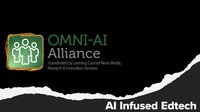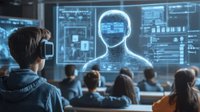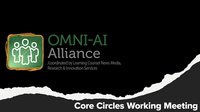The first 1,000 days last a lifetime. Those first three years are when a child’s brain builds the pathways for language, learning, and connection. Miss that window and it becomes much harder to catch up, just check the data.
In our rush to innovate, we put screens where people should be. We believed devices would close the literacy gap. They have not. For too many children, that gap has grown into a canyon.
The Word Gap Starts Early
Some children hear 21,000 words a day. Others, often in low-income, multilingual, or under-resourced homes, hear closer to 6,000. By kindergarten, they are already behind.
This is not about love. I have never met a parent who did not want the best for their child. When I taught in the South Bronx, I met parents working two jobs, caring for several kids, and learning English at night. The problem is not effort. It is access, time, and support during those critical first 1,000 days.
The Science of Interaction
Young children’s brains grow through serve and return interactions, back-and-forth exchanges where an adult responds to a child’s babble, gesture, or question. Harvard’s Center on the Developing Child calls this the foundation of early learning. These moments fire neural connections that build language and strengthen relationships.
Conversation is not just nice to have. Research shows that conversational turns, not just word counts, predict later success. A screen cannot look into a child’s eyes, respond to their curiosity, or delight in their laughter.
Why Screens Are Not Closing the Gap
For more than a decade, the solution has been screens. Tablets for toddlers. Apps for preschoolers. Digital companions smiling from inside a device. But screens may entertain more than they teach. They cannot replace the joy of a silly rhyme or the connection of a bedtime story. And too much passive screen time can slow the very development we want to encourage.
Screenless AI Meets Families Where They Are
AI does not have to mean another glowing rectangle. It can be simple, quiet, and focused on listening, speaking, and connecting.
Take Kibeam, a new screenless AI tool piloted in Head Start programs and Title I schools. Children hold a small device that tells stories, pauses for their response, repeats tricky words, and encourages them to keep talking. No Wi-Fi. No app store. Just words, stories, and conversation.
I remember one four-year-old in a Brooklyn Head Start classroom. English was not spoken at home, and her mother worried she was falling behind. With Kibeam, the child giggled through a story about a dragon, proudly repeated new words, and pulled her mother into the exchange. For the first time, her mom said, she felt like a reading partner, not a bystander.
This is what screenless AI can do: meet families where they are, spark conversation, and give parents tools to engage without requiring hours of prep or another device to manage.
Redefining Success
If reading is a right, we must measure success by growth in language, not the number of devices distributed.
Tools like LENA can track conversational turns between children and caregivers, a key driver of literacy development. Assessments like the Peabody Picture Vocabulary Test (PPVT) measure both receptive and expressive vocabulary growth. These metrics, not hardware counts, tell us whether children are truly building the foundation for literacy.
Imagine a system where we celebrate the number of conversations sparked, the new words understood, and the connections made, where technology is judged by the human interactions it enables, not the screen time it demands.
A Call to Action
We need to invest in screenless literacy tools for Title I schools, early learning programs, and family literacy initiatives. We must design with communities, not for them.
The first 1,000 days last a lifetime. Let us fill them with more words, more stories, more connection, and much less of the glow.
+++
About the Author

Jeff Piontek, Global Head of Educational Partnerships at Kibeam, is an author, keynote speaker and teacher (most importantly). He has worked with many at-risk school districts nationally as a consultant on affecting educational change and reform. Jeff started out as a Science teacher in the South Bronx, NYC and worked his way up to the Director of Instructional and Informational Technology in NYC.











